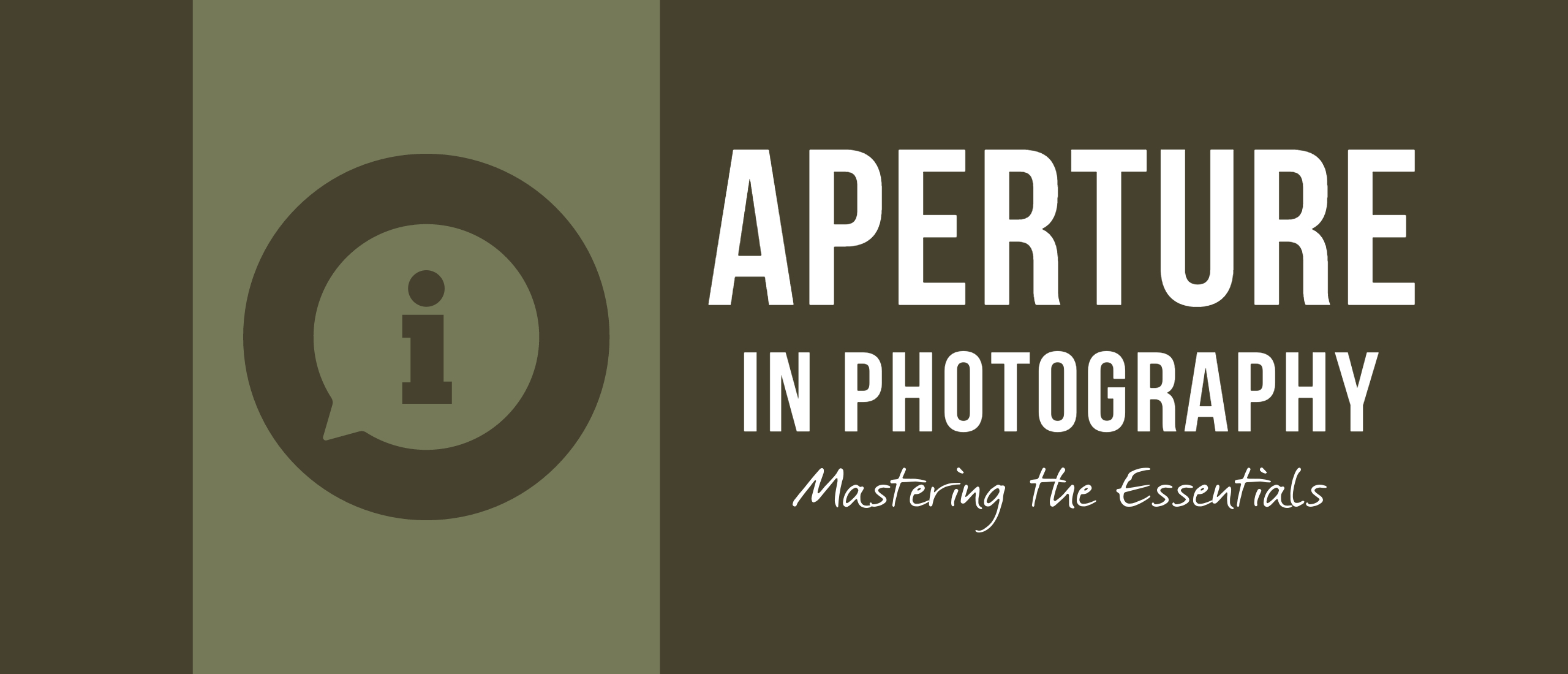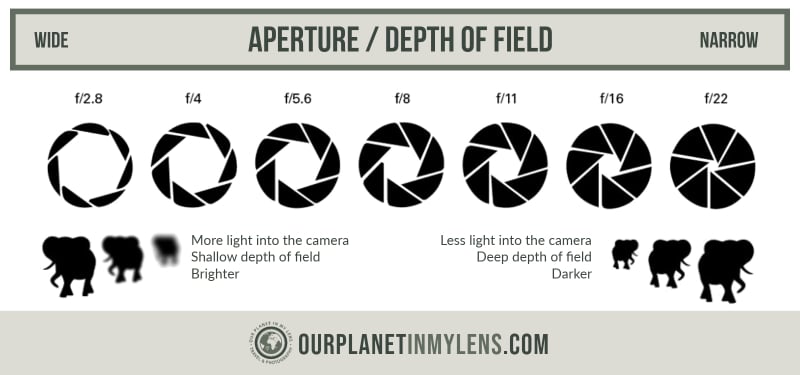- What does f/stop mean?
- The relation of aperture and Depth of Field
- Aperture and the Exposure Triangle
- The effect of Aperture on Shutter Speed
- How to choose the right aperture?
- What is the best aperture for landscape photography?
- Which aperture is best for portrait photography?
- What is the best aperture for photographing a group of people?
- What is the best aperture for travel photography?
- What is aperture priority mode and when should you use it?
- What is the minimum or smallest aperture?
- What is the maximum aperture?
- Where to find the aperture on a camera lens?
- Receive Photography and Travel Tips

Understanding Aperture in Photography
What is aperture in photography and how does it work? Aperture refers to the adjustable opening in a camera lens diaphragm. The size of the opening in the camera lens helps control the exposure or amount of light passing through the lens onto the image sensor.
Apart from controlling how light or dark an image is (the exposure), aperture also gives you control over how much of the image is in focus and how much of the background is blurry. In photography terms, this is called the Depth of Field.
What does f/stop mean?

The aperture is expressed in F-numbers or f/stops. The 'f' stands for the ratio of the focal length (focal stop) of the lens. Examples of f/stops are: f/1.4, f/1.8, f/2.8, f/3.5, f/5.6, f/8, f/11, f/16, f/22.
A higher aperture number (f/22) means less light is entering the camera because of the smaller lens opening (apertures) and a lower aperture number (f/2.8) means more light is entering the camera because of the larger apertures. A higher aperture is better for a high-light scenario while a lower aperture is better for low light scenarios. To learn and see the differences in f/stops I would advise to experiment with different f/stops.
The relation of aperture and Depth of Field
A very simple explanation of Depth of Field is how blurry or sharp the background is of the subject you focus on. How aperture affects the Depth of Field:
- The lower the aperture number or f/stop, the larger the lens opening, the blurrier the background because of the less depth of field.
- The higher the aperture number of f/stop, the smaller the lens opening, the sharper the background because of the greater depth of field.
Aperture and the Exposure Triangle

Aperture is one of the three pillars of the so-called exposure triangle; the three settings that give you control over the exposure, the amount of light that hits the camera sensor to record an image. The other two pillars are the Shutter Speed and ISO. When you increase the exposure for one of these three elements, you need to reduce it for one or both of the other pillars to maintain the same exposure. If you understand the relationship between these elements, you will gain more control of the images you want to capture.
The effect of Aperture on Shutter Speed
Aperture is significantly related to the Shutter Speed. Using a wide aperture (low f-number or f/stop) in combination with a fast shutter can provide the same exposure (amount of light that reaches the camera sensor) than using a narrow aperture (high f/stop) with slow shutter speed. Although the exposure will be similar, the look and feel of your image can be completely different.
In essence, the shutter speed helps the aperture regulate the exposure, but when you’re photographing moving objects you need to make sure that you’re using higher shutter speed to prevent a blurry image.
- a wide aperture (low f/stop) means more light is entering the lens. Because of that, the shutter doesn't have to stay open as long to make a correctly exposed image, which translates into a faster shutter speed.
- a low aperture (high f/stop) means less light is entering the lens. Because of that, the shutter has to stay open a little longer. This translates into a slower shutter speed.
How to choose the right aperture?
Is it better to use a higher aperture or low aperture? After reading the previous information about aperture and the relation with the exposure triangle and depth of field, I hope you will understand that there are no rules for the best or right aperture. It depends on what you want to photograph and how you want your image to look like. However, there are some aperture guidelines for different types of photography, such as landscape photography and portrait photography.
What is the best aperture for landscape photography?
When I photograph landscapes, I want to create the maximum depth of field and see as many details as possible over the whole range of my image from the foreground to the background. This can be achieved by choosing a higher f-number (low aperture), such as f/8, f/11, f/16, or f/22. To answer the question: there isn't one best aperture for landscape photography, but to create more detail in your image it's advised to use higher f/stops.
Which aperture is best for portrait photography?
When photographing portraits of people I love it when the background is more blurry, which means you have to create a very shallow depth of field. This can be achieved by using a wide aperture in portrait photography, like f/1.4 or f/2.8.
What is the best aperture for photographing a group of people?
In landscape photography, you choose a maximum depth of field and for portraits, you want to create a minimum depth of field. When photographing, for example, a group of people, you need a more intermediate level of depth of field. This can be achieved by choosing a mid-range aperture, such as f/5.6 or f/6.3.
What is the best aperture for travel photography?
Travel photography is a combination of different types of photography, such as landscape photography, nature photography, portraits, street photography, and architecture photography. There isn't one best aperture for travel photography. It depends on what you want to photograph: a beautiful landscape, the setting sun, a night sky, the Maasai tribe, an elephant close-up, or a portrait of a monk.
What is aperture priority mode and when should you use it?
Aperture Priority mode is a semi-automatic shooting mode on the camera, often marked as A or AV on your camera. It allows you to have full control over the aperture (f/stop) while the camera automatically adjusts the shutter speed to get the correct exposure.
The advantage of using aperture priority is to control the Depth of Field (DoF) in your image, which can be very useful in for example landscape photography or portrait photography. More advanced photographers will probably manually set their shutter speed and ISO to balance out the exposure, but if you're a beginner, aperture priority mode is a perfect camera setting to control your aperture and let the camera do the rest (semi-automatically).
What is the minimum or smallest aperture?
What is the maximum aperture?
Every lens has a maximum aperture or widest opening the lens can achieve for each end of the zoom range. Simply explained: it is the hole in the lens with the largest diameter, allowing the most amount of light to pass through the lens.
Where to find the aperture on a camera lens?
The maximum aperture can be found on the lens barrel. Prime lenses maintain the largest aperture through the entire zoom range (for example f/2.8). Other zoom lenses detail for example f/4.5-5.6 on the lens barrel.

